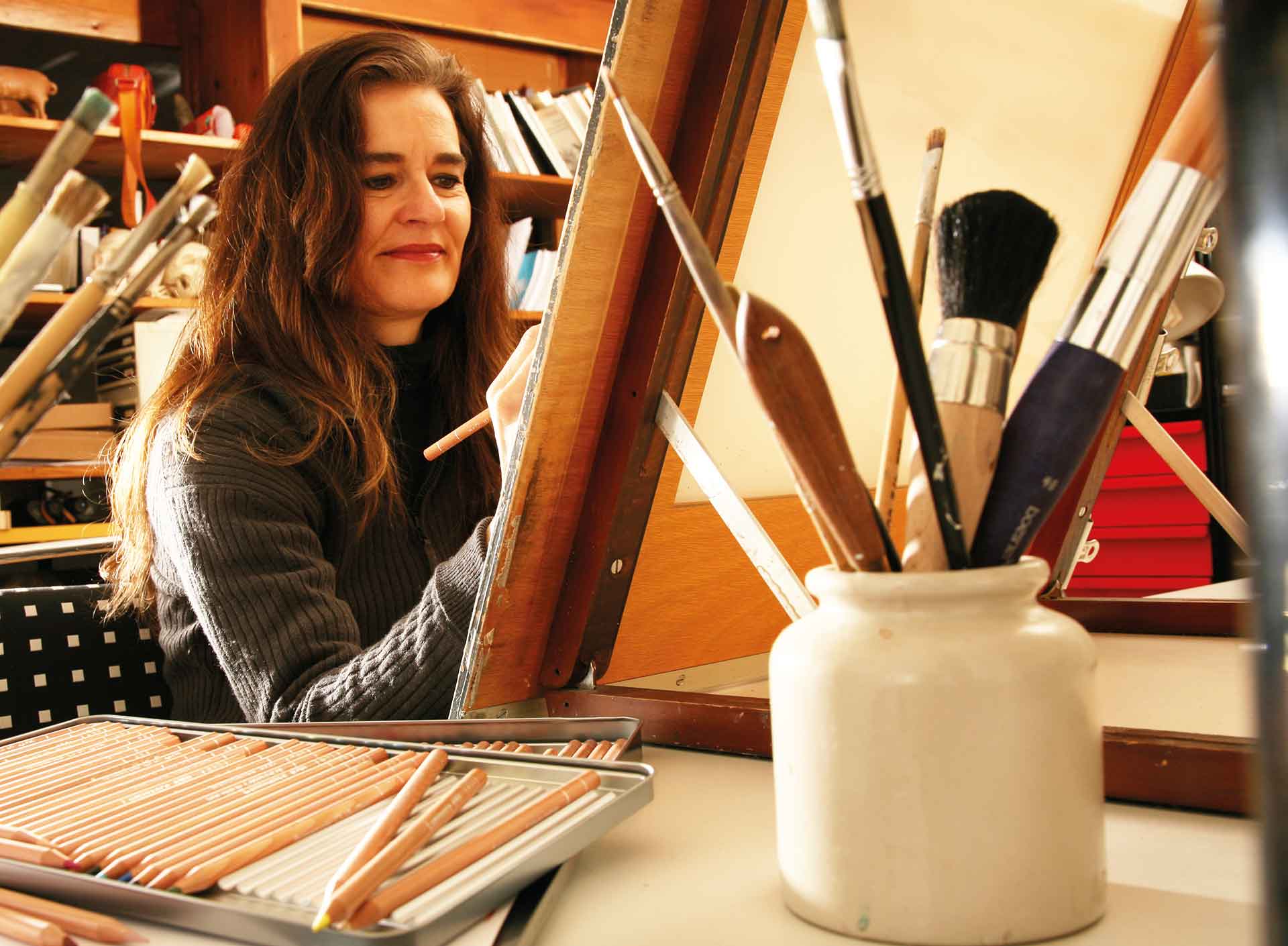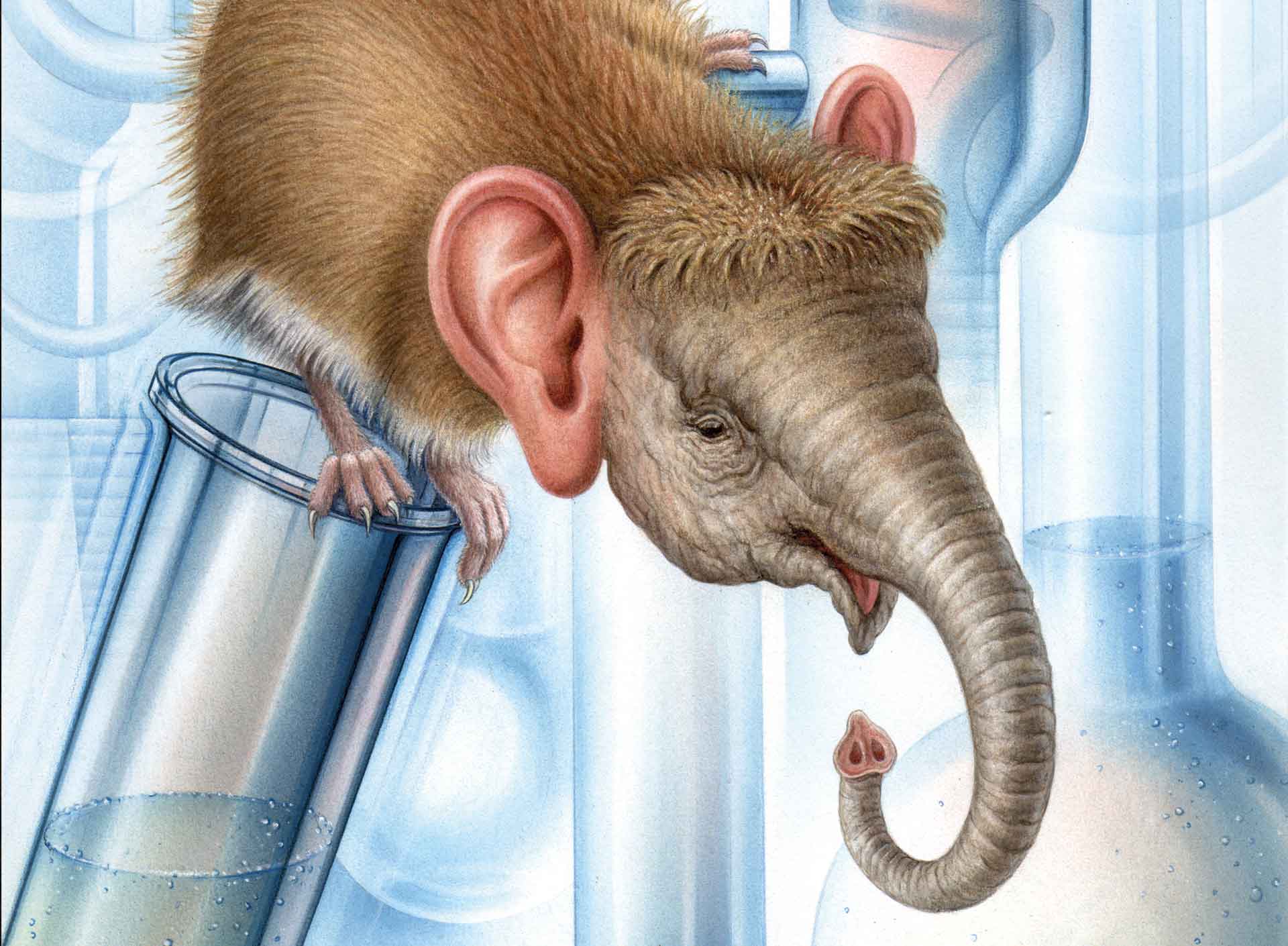Portrait

Sonja Burger
Sonja Burger gathered a prime enthusiasm for medical illustration during her apprenticeship, and prior to her graduation from the Zurich School of Design, Rüdiger Verlag in Berlin and Prof. Dr. med. med. A. Puff from the University Hospital Freiburg i. Br. discovered her. Here, the foundation was laid for numerous series and studies of medical illustrations by Sonja Burger.
During her training at the School of Design Zurich, advertising agencies became aware of Sonja Burger's versatile, accurate and very efficient work through school visits, enabling her first assignments in advertising. Sonja Burger's versatility in ideas and styles has become even more encompassing as she practices on a daily basis, and she is still excited about new additions to her repertoire.
On the basis of Sonja Burger 's diploma thesis, whose theme was small mammals of the Ruggellerried, she created a name early among the zoo technicians, thereby receiving her first commission from the magazine Schweizer Woche (Swiss Week) for an illustration of settlement species such as: fox, mice, martens etc. Swiss Week was soon followed by orders from various newspapers, magazines and book publishers in equally diverse topics, and her creative work for the print media has since been repeatedly expanded with a theme.
The joy of the experience of making things appear in different perspectives with ease and efficiency, to create different worlds, to accurately document the existing, to visualize ideas and to draw what can not be photographed, is Sonja Burger's vocation.
Sonja Burger – Timeline
From 2010
Private lessons and intensive courses at primary and secondary school level.
2007-2009
Intensive courses and instruction for draftsmen in freehand drawing at the BBZ (Berufssbilungszentrum) Schaffhausen.
From 2001
Lecturer for painting and drawing courses at the CHAIR OF ARCHITECTURE at ETH Zurich. Lessons at various semester trips in Switzerland and Italy.
1997–2001
Head of painting and drawing courses in Switzerland, France and Italy.
From 1986
Self-employed illustrator and scientific drawer in constant cooperation with publishers, advertising agencies, companies, etc. Illustrations and drawings (in various fields, painting techniques and styles) for magazines, books, advertising, teaching material, etc. demonstrating illustrations of various painting materials at trade fairs and video productions
1988–1990
Part-time position as medical drawer / illustrator at the University Hospital Zurich, Department of Surgery.
1982–86
Professional class for scientific drawing and illustration SfG Zurich. Diploma thesis, Topic: "Zoology" Additional courses in the fields of lithography, photography, airbrush (spray gun technic)
1981–82
Hospitantin SfG Zurich
1979–81
Photoretoucher
1978–79
Preliminary course, School of Design Zurich (SfG)

Comments by Walter Hess
Comments by Walter Hess (†), formerly Chefred. Natürlich
Sonja Burger belongs to the elite of scientific drawers/illustrators in Switzerland, which I already noticed in the mid-1980s. At that time, I was faced with the task of illustratively illustrating magazine articles on human body parts, clinical pictures, and also ecological topics, whereby certain subtleties, characteristics of behavior, or biotopes could be clearly identified. It was about the visualization of the invisible, which could not be grasped with the means of photography, and not simply pictures for the graphic animation of magazine pages. An additional, exact visual information was required.
Most drawers and painters have freed themselves from the compulsion to be realistic after the advent of photography. Exactly the exact figure represents particularly high handicraft demands and is only little maintained. Sonja Burger succeeds in embedding the scientific presentations in an apt mood atmosphere, that is to say, linking the exact reproduction of details with an artful and sensitive design that evokes feelings in the on-looker. This combination of true-to-life information and creativity is a stroke of luck, because one aspect does not work at the expense of the other, but both support each other.
In addition to the technical qualities, the scientific illustrator also possesses organizational skills. It is productive, prompt and thus guarantees the fulfillment of your customer requirements. For design tasks of publications, she works together with clients from various industries. Meeting deadlines to the minute has been tried and tested for years in these demanding and mostly complex jobs.


